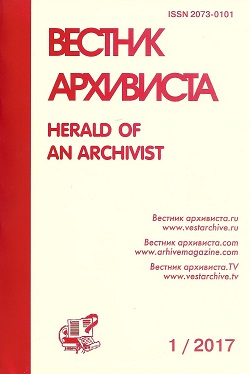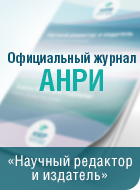Scientific article
doi 10.28995/2073-0101-2024-3-766-778
For citation
Khodjakov, Mikhail V. (2024), Introduction of the card system in besieged Leningrad in the summer of 1941, Herald of an Archivist, № 3, pp. 766-778, doi 10.28995/2073-0101-2024-3-766-778
Khodjakov, Mikhail V., St. Petersburg State University, St. Petersburg, Russia
Introduction of the card system in besieged Leningrad in the summer of 1941
Abstract
During the outbreak of the Great Patriotic War, the introduction of the card system in the Soviet Union was carried out with a great delay. This happened almost a month after the start of the war. The materials identified in the Russian State Archive of Economics and the Central State Archives of St. Petersburg allow us to follow the progress of an important process associated with the decision to introduce a card system and divide the population into groups. The project, and then a government decree, entrusted all work on the production and issuance of cards to the Council of People's Commissars of the union and autonomous republics. The maintenance of city and district card bureaus was carried out at the expense of the population, who had to pay for their activities by depositing money for food cards received in hand. Not realizing the full depth of the coming food crisis, the leaders of Leningrad, simultaneously with the introduction of the card system, allowed the functioning of trade at increased prices. Some categories of the population with high incomes took advantage of this opportunity and actively used commercial stores at the beginning of the war. However, already in September 1941 it was necessary to abandon the sale of goods and products to the population at increased prices. Problems associated with the rationed distribution of products were accompanied by the production and distribution of counterfeit food cards, the issuance of preferential coupons and cards to various categories of workers in Leningrad – initially to workers in “hot” production, and then also to blood donors and pregnant women. The system of food privileges that existed in the besieged city had its own laws. The cards that appeared in July 1941 did not indicate any of the four population groups established by the instructions (workers, employees, dependents and children). In August, bread cards for dependents and children appeared with indications of the corresponding categories (I, D.), and since September the cards had all the designations of categories of the population (P – worker, S – employee, I – dependent, D – children). The resolution of the Leningrad City Executive Committee, adopted on July 26, 1941, provided for the issuance of food cards for the month of August. At the same time, it spoke of transferring an entire group of Leningraders to a boiler allowance (without issuing cards). This category included pupils of orphanages, students of factory training schools, vocational and railway schools of the Main Directorate of Labor Reserves. The system of rationed distribution of products, which existed in a number of cities in the country since July 1941, including Leningrad, developed and became more complex. It played a role in conditions of acute food shortages during the war and was canceled in December 1947.
Keywords
Card system, food distribution, Leningrad, 1941, Great Patriotic War, historical sources.
Download the article: khodjakov_doi
References
Berggolts, O. F. (2015), Blockade Diary (1941-1945), Vita Nova, St. Petersburg, Russia, 556 p.
Lomagin, N. A. (2014), In the grip of hunger. Blockade of Leningrad in the documents of the German special services, the NKVD and in the letters of Leningraders, Aurora-Design, St. Petersburg, Russia, 360 p.
Lomagin, N. A. (2004), Unknown blockade, In 2 books. Book 1, Publishing House “Neva”, St. Petersburg, Russia, 576 p.
Orlov, I. B. (2010), Card supply in 1941-1943: calculations and miscalculations, Modern problems of service and tourism, № 3, pp. 36-42.
Osokina, E. A. (1999), Behind the facade of “Stalin's abundance”: Distribution and the market in the supply of the population in the years of industrialization, 1927-1941, ROSSPEN, Moscow, Russia, 271 p.
Chistikov, A. N. (ed.) (2020), Everyday Documents of Leningraders during the War and Blockade 1941-1945 Album, Art-Espress, St. Petersburg, Russia, 236 p.
Piankevich, V. L. (2014), “People lived by rumors”: Informal communicative space of besieged Leningrad, Vladimir Dal, St. Petersburg, Russia, 479 p.
Sobolev, G. L. (2013), Leningrad in the struggle for survival in the blockade, Book one: June 1941 - May 1942, S.-Peterb. un-ta pub., St. Petersburg, Russia, 696 p.
Tverdyukova, E. D. (2010), The struggle against abuses in the sphere of card supply of the USSR population. 1941-1947, Bulletin of St. Petersburg University, Series History, № 2, pp. 32-40.
Yarov, S. V. (2012), Blockade ethics. Representations of morality in Leningrad in 1941-1942, Centerpoligraf pub., Moscow, Russia, 603 p.
Bidlack, R., Lomagin, N., Schwartz, M. (2012), The Leningrad blockade, 1941–1944: A new documentary history from the Soviet archives, Yale University Press, 487 p.
Hass, Jeffrey K. (2021), Wartime Suffering and Survival: The Human Condition under Siege in the Blockade of Leningrad, 1941–1944, Oxford University Press, 440 p.
Hass, J. K., Lomagin, N. A. (2021), ‘Seeing like a Starving State: The Soviet Political Economy of Death in the Blockade of Leningrad’, Modern History of Russia, vol. 11, №. 2, pp. 324–338.
About the authors
Khodjakov Mikhail V., Doctor of Historical Sciences, professor, St. Petersburg State University, Institute of History, department of modern history of Russia, professor, St. Petersburg, Russia, +7-921-563-44-07; This e-mail address is being protected from spambots. You need JavaScript enabled to view it
Grant information
The study has been supported by the research grant no. № 24-18-00305 “Food supply in besieged Leningrad: organization of production, distribution practices, memory” of the Russian Science Foundation, https://rscf.ru/project/24-18-00305/
The article was received in the editorial office on 27.05.2024, recommended for publication on 20.06.2024














